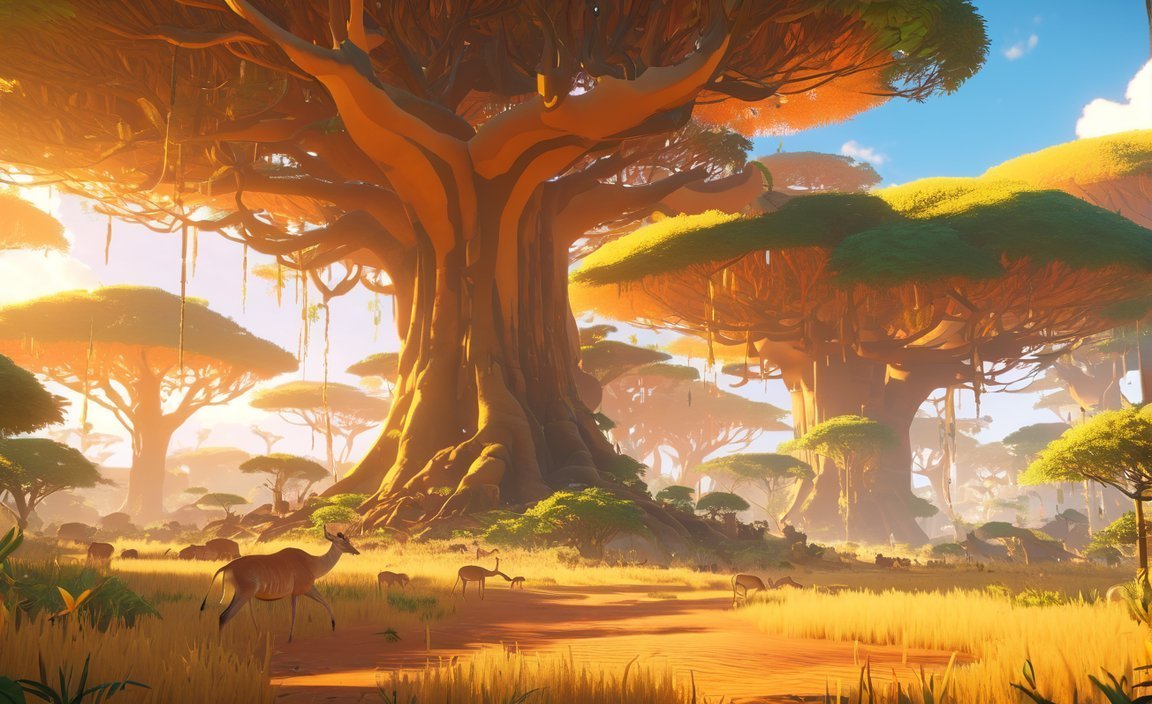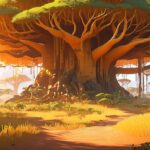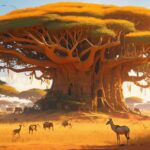Explore the Fascinating World of Savanna Biomes: 10 Intriguing Facts. The savanna biome is a mesmerizing ecosystem that spans across vast stretches of the Earth’s surface, boasting a stunning display of unique flora and fauna. In this article, we will uncover ten captivating facts about the savanna biome, shedding light on its diverse landscapes, remarkable adaptations, and the delicate balance that sustains its thriving wildlife. From the iconic African savannas to the lesser-known South American and Australian grasslands, join us on a journey through these awe-inspiring biomes and discover the hidden wonders that lie within.
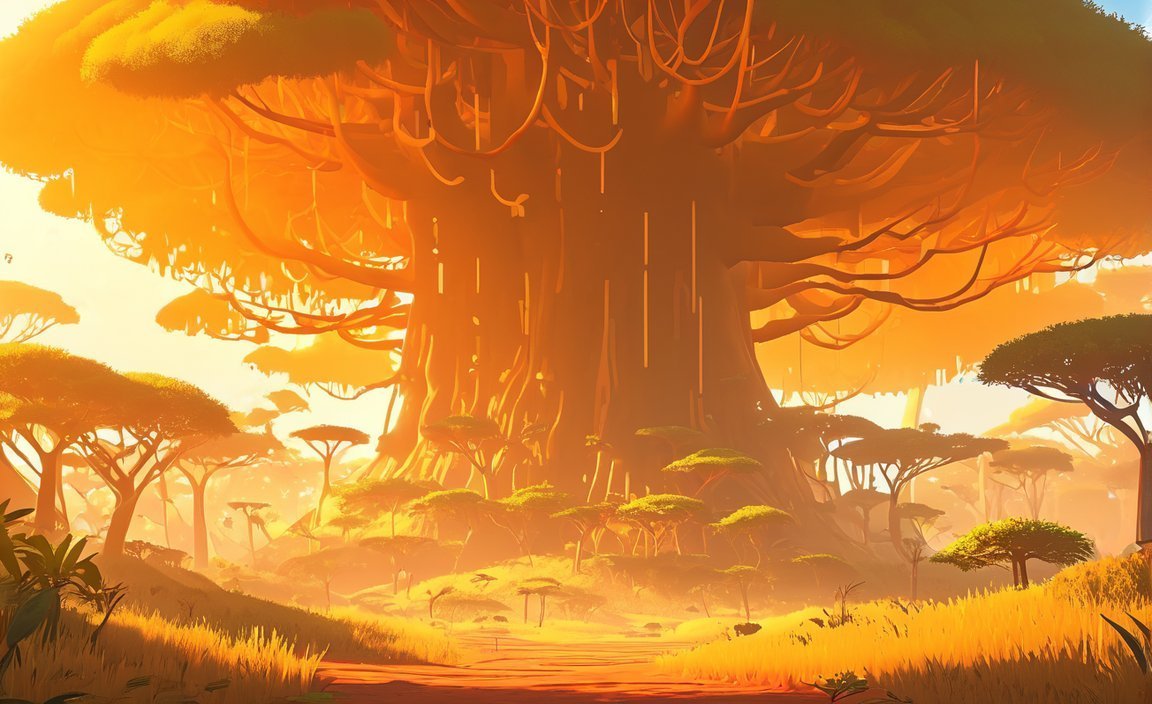
Key Takeaways:
- Savannas are found in various parts of the world, including Africa, Australia, South America, and India.
- Africa is home to the largest expanses of savanna.
- Savannas have an open canopy, allowing sunlight to reach the ground.
- The largest herbivorous animal diversity can be found in savannas.
- Savannas are characterized by distinct wet and dry seasons, affecting food availability.
- Savannas have three different categories.
- Homo sapiens first lived in savannas.
- Savannas support diverse animal life and unique plant adaptations.
- Savannas form a broad band around the middle part of the Earth.
- Exploring and understanding savannas is essential to appreciate their unique ecosystems and the need for conservation.
10 Interesting Facts about the Savanna Biome
The savanna biome is a mesmerizing ecosystem that spans across continents, offering a glimpse into the stunning diversity of nature. From Africa to Australia, South America to India, savannas can be found all over the world, captivating our imaginations and inviting us to explore their unique wonders. Are you ready to uncover 10 intriguing facts about the savanna biome?
1. Global Presence
Fact: Savannas can be found in various locations worldwide, including Africa, Australia, South America, and India. These expansive landscapes span continents, highlighting the adaptability and resilience of the savanna biome. Whether you’re in the Serengeti of Africa or the grasslands of Australia, savannas offer an incredible experience for nature enthusiasts.
2. Expanses in Africa
Fact: Africa boasts the largest expanses of savanna in the world. Its breathtaking wilderness encompasses iconic savanna regions such as the Serengeti, Maasai Mara, and Kruger National Park. These vast stretches of grasslands and scattered trees are not only home to an astonishing variety of wildlife but also hold a rich cultural heritage for indigenous tribes.
3. Nature’s Middle Band
Fact: Savannas form a broad band around the middle part of the Earth, between tropical rainforests and deserts. With their unique mixture of grasses and trees, savannas provide a transitional zone that effectively balances the extremes of these neighboring biomes. It’s like nature’s way of creating a harmonious middle ground.
4. Canopy of Openness
Fact: One defining characteristic of savannas is their open canopy, where scattered trees generously provide shade for the grasslands below. Unlike dense forests with a closed canopy, savannas allow sunlight to penetrate through, creating a mosaic of light and shadows that shapes the landscape and influences the diverse range of species that call this biome home.
5. Home to Herbivorous Diversity
Fact: Savannas are renowned for hosting the largest diversity of herbivorous animals on the planet. From massive elephants and towering giraffes to graceful antelopes and nimble zebras, savannas provide an abundant food source that sustains this remarkable array of plant-eating creatures. It’s a captivating sight to witness these herbivores coexisting and thriving in their natural habitat.
6. Categorizing Diversity
Fact: Savannas can be categorized into three main types: tropical, temperate, and flooded. Each type possesses distinct characteristics and supports a unique array of plants and animals. Whether you find yourself traversing the tree-dotted African savannas or the flooded plains of South America’s Pantanal, each category presents its own marvels to be explored.
7. Wet and Dry Seasons
Fact: The availability of food in savannas fluctuates dramatically due to the alternating wet and dry seasons. During the wet season, when rains drench the land, the savanna landscape transforms into a lush haven, teeming with life and food abundance. However, the dry season poses a challenge, as the scarcity of rainfall forces plants and animals to adapt and find innovative ways to survive.
8. Cradle of Humanity
Fact: Savannas hold incredible historical significance as the birthplace of our species. Homo sapiens, the modern human beings we are today, first emerged in these grasslands millions of years ago. The savanna biome played a pivotal role in shaping our ancestors’ survival strategies, influencing their development and giving rise to the incredible diversity of human cultures we see today.
9. Distinct Wet and Dry Seasons
Fact: The savanna biome is distinguished by its distinct wet and dry seasons. These seasonal variations shape the landscape, affecting everything from the growth of grass and trees to the movements and behaviors of animal populations. Savannas are a testament to nature’s ingenious way of adapting to environmental fluctuations.
10. Animal Life and Plant Adaptations
Fact: Savannas boast a spectacular tapestry of animal life and remarkable plant adaptations. From the majestic lions and stealthy cheetahs to the iconic acacia trees and resilient baobabs, each species has evolved unique traits to thrive in this challenging environment. A visit to the savanna biome is like stepping into a living museum, where nature proudly showcases her artistic brilliance.
These 10 intriguing facts about the savanna biome paint a picture of a captivating and diverse ecosystem worth exploring and protecting. From the global presence of savannas to the incredible adaptations of plants and animals, this biome offers endless wonders to those willing to delve into its fascinating intricacies. So, why not embark on an adventure through the savanna and discover its hidden treasures firsthand?
Citations:
- Boffinsportal: 20 Interesting Savanna Facts for Nature Lovers
- Facts.net: Savanna Facts
Here are 10 interesting facts about biomes that will leave you amazed! Explore the wonders of different ecosystems and their unique characteristics. Click here to uncover fascinating details about these diverse habitats.
Curious about condensation? Discover 10 intriguing facts about this natural phenomenon that plays a crucial role in our environment. Don’t miss out on these captivating insights – click here to learn more!
Dive into the captivating world of marine biology with these 10 intriguing facts. From mesmerizing marine creatures to the delicate balance of ocean ecosystems, there’s so much to explore. Click here to unveil the secrets of the underwater realm.
Uncover the captivating world of marine life with these 10 fascinating facts. From majestic whales to colorful coral reefs, the ocean is teeming with wonders waiting to be discovered. Click here to embark on an underwater adventure.
Take a tour of Parliament House and indulge in the history and significance of this iconic landmark. From its architectural marvels to the political events that shape our nation, there’s so much to learn. Click here to explore 10 intriguing facts about Parliament House.
Discover 10 interesting facts about Parliament House in Canberra, the heart of Australian democracy. From its stunning design to the pivotal role it plays in our nation’s governance, there’s much more to this iconic building. Click here to delve into its fascinating history.
Ready to dive into the enchanting world of ponds? Uncover 10 mesmerizing facts about these small aquatic ecosystems that are home to a variety of fascinating organisms. Click here to explore the wonders of ponds.
Embark on a deep-sea journey to discover 10 intriguing facts about sea creatures. From the bizarre-looking to the awe-inspiring, these marine animals will leave you in awe. Click here to dive into the mysteries of the ocean.
Explore the fascinating world of sea life with these 10 captivating facts. From vibrant coral reefs to magnificent underwater landscapes, there’s a whole universe waiting to be explored beneath the ocean’s surface. Click here to uncover the secrets of the sea.
Embark on a journey through the taiga biome as you discover 10 fascinating facts about this unique and diverse ecosystem. From towering coniferous forests to elusive wildlife, there’s so much to learn about this enchanting landscape. Click here to explore the wonders of the taiga.
Key Characteristics of Savanna Vegetation
Savanna vegetation is characterized by its unique features, making it one of the most captivating biomes on Earth. Let’s delve into the key characteristics that define the captivating world of savanna vegetation.
1. Hot and Seasonally Dry Climate
In savannas, the climate is characterized by high temperatures and distinct wet and dry seasons. This biome experiences hot, arid conditions that shape its vegetation in incredible ways.
2. Open Tree Canopy and Tall Grass Understory
The savanna biome displays an open tree canopy, with tall grasses thriving underneath. This striking combination creates a captivating landscape that stretches as far as the eye can see.
3. Dominance of Acacia Trees
When it comes to trees in savannas, acacias take center stage. These remarkable trees dominate the savanna vegetation with their impressive height and unique adaptations to the challenging environment.
4. Deciduous Trees
Most trees in savannas are deciduous, meaning they shed their leaves during the dry seasons. This adaptation helps conserve resources and withstand the periods of limited water availability.
5. Swollen-Trunk Trees: Water Storage Adaptation
Certain trees, like the iconic baobab, have swollen trunks that act as natural water storage reservoirs. This adaptation allows them to survive prolonged periods of drought and provide sustenance to the surrounding wildlife.
6. Xeromorphic Herbaceous Plants
The ground cover in savannas is primarily composed of partially xeromorphic herbaceous plants. These plants are specially adapted to conserve water, allowing them to thrive despite the challenging climate.
7. Scattered Trees and Sparse Shrubs
Savanna vegetation consists of an upper stratum of scattered trees and a middle layer of sparse shrubs. This arrangement allows sunlight to penetrate the ecosystem and shape the unique characteristics of the biome.
8. Grasses as the Primary Herbaceous Layer
The herbaceous layer in savannas consists mainly of grasses, further enhancing the impressive landscape. These grasses provide vital resources for herbivorous animals and contribute to the vibrant diversity of the biome.
9. Occurrence in Fire-Prone Environments
Savanna vegetation thrives in areas where bushfires occur, which is an integral part of the ecosystem. These fires play a crucial role in maintaining the balance and preventing the encroachment of other plant species.
10. Alternating Wet and Dry Seasons
Savannas are characterized by alternating wet and dry seasons. These distinct seasons shape the vegetation, influencing the growth and dynamics of the biome in captivating ways.
Given the characteristics mentioned above, savanna vegetation represents a truly remarkable ecosystem brimming with unique adaptations and captivating beauty.
Key Takeaways:
- Savanna vegetation thrives in hot and seasonally dry climates.
- It features an open tree canopy with a continuous tall grass understory.
- Acacia trees dominate the savanna biome.
- Most trees in savannas are deciduous and shed their leaves during dry seasons.
- Certain trees like the baobab have swollen trunks to store water.
- The ground cover primarily consists of partially xeromorphic herbaceous plants.
- Savannas have an upper stratum of scattered trees and a middle layer of sparse shrubs.
- Grasses form the primary herbaceous layer in savannas.
- Savanna vegetation is found in areas prone to bushfires and alternating wet and dry seasons.
Sources:
– Savanna | African Grasslands, Wildlife & …
– What are the characteristics of savanna?
The Role of Fire in Savanna Ecosystems
The savanna biome is a unique and vibrant ecosystem that is characterized by its open grassland and scattered trees. One of the most intriguing aspects of the savanna is the role that fire plays in shaping and maintaining this diverse landscape. In this article, we will explore the fascinating world of savanna biomes and delve into the role of fire in these incredible ecosystems.
Fire: A Catalyst for Change
Fire is an essential and natural part of the savanna ecosystem. It has been shaping savannas for millions of years and plays a vital role in maintaining the balance between vegetation, animals, and the environment. But how exactly does fire influence savanna biomes?
Nutrient Recycling
Fire acts as a catalyst for nutrient recycling in the savanna. When vegetation burns, essential nutrients such as nitrogen and phosphorus are released back into the soil. These nutrients then fuel the rapid regrowth of grasses and other plants, creating a cycle of renewal. In fact, many savanna plants have adapted to rely on fire for their reproduction, with some species even developing fire-resistant seed coats or underground storage organs that protect them from the intense heat.
Controlling Tree Growth
Fire also helps control the growth of trees in the savanna. Without fire, the savanna would gradually transition into a closed forest. However, periodic fires prevent this from happening. Grasses, which are highly flammable, burn quickly and easily, while most trees are more resistant to fire. As a result, fires preferentially consume the grass layer, keeping trees in check and maintaining the characteristic open canopy of the savanna.
Biodiversity Hotspots
Savannas are known to be biodiversity hotspots, and fire plays a crucial role in supporting this incredible diversity. By maintaining open areas, fire creates diverse habitats that cater to a wide range of plants and animals. Some species, such as certain grasses and herbivores, thrive in areas that have recently been burned, while others, like certain tree species and predators, prefer patches of unburned savanna. These different habitats, created by fire, foster a rich variety of species in the savanna biome.
Natural Regeneration
While fires can be destructive, they also have a rejuvenating effect on the savanna ecosystem. As mentioned earlier, fire promotes the regrowth of grasses and other plants. This regrowth, in turn, attracts herbivores who feed on the fresh vegetation. These herbivores, such as zebras and wildebeests, graze on the new growth, maintaining a balance between plant and animal populations. Additionally, fire removes accumulated dead plant material, preventing it from building up and becoming a potential wildfire hazard.
Key Takeaways:
- Fire is an integral part of the savanna ecosystem, shaping and maintaining the diversity of this unique biome.
- Fire recycles nutrients, fueling the regrowth of plants in the savanna.
- It helps control the growth of trees, maintaining the open canopy characteristic of the savanna.
- Fire creates diverse habitats, promoting biodiversity in the savanna biome.
- While fires can be destructive, they also have a rejuvenating effect on the savanna, promoting fresh growth and attracting herbivores.
References:
– Smithsonian Tropical Research Institute. (2021). Fire in the Rainforest.
– [Morrison, I. K. (2006). The role of fire in savannas: insights from an Australian icon.] (
The Impact of Human Activities on Savanna Biomes
Savanna biomes are unique and diverse ecosystems that are heavily influenced by human activities. While some of these activities have positive impacts, such as sustainable farming practices and the tourism industry, others contribute to the degradation and disruption of the savanna biome. In this article, we will explore the different ways in which human activities affect these fascinating and fragile ecosystems.
1. Human Settlements and Land-cover Change
One of the most significant impacts of human activities on savanna biomes is the expansion of human settlements. As populations grow, more land is needed for housing, infrastructure, and agriculture. This leads to the conversion of natural savanna habitats into urban areas and farmland. This land-cover change disrupts the delicate balance of the ecosystem, affecting both plant and animal species that rely on the savanna for their survival.
2. Agriculture and Overgrazing
Agricultural practices, particularly intensive farming and overgrazing by livestock, also pose threats to the savanna biome. Large-scale agriculture often involves the clearing of vast areas of savanna to make way for crops or pastureland. This reduces the availability of natural habitats for native species and can lead to the loss of biodiversity. Overgrazing by livestock depletes the vegetation in the savanna, making it more vulnerable to erosion and further land degradation.
3. Logging and Deforestation
Logging activities in savanna regions contribute to deforestation, another significant issue caused by human activities. Trees play a crucial role in maintaining the balance of the savanna ecosystem, providing shade, shelter, and nutrients for other plants and animals. When trees are removed through logging, the savanna loses its natural structure and can become more susceptible to soil erosion and moisture loss. Deforestation also results in the loss of habitat for many species, including endangered ones.
4. Greenhouse Gas Emissions and Climate Change
Human-induced greenhouse gas emissions, particularly from the burning of fossil fuels and deforestation, contribute to climate change. This has direct consequences for savanna biomes, as they are highly susceptible to changes in temperature and rainfall patterns. Increased temperatures and droughts can reduce the availability of water in the savanna, making it difficult for plants and animals to survive. Changes in rainfall patterns can disrupt the seasonal cycles of the savanna, affecting the growth and reproduction of plant and animal species.
5. Conservation Efforts and Sustainable Practices
Despite these negative impacts, there are initiatives aimed at protecting and conserving savanna biomes. Conservation efforts include measures to prevent further land-cover change, regulate grazing practices, and reduce greenhouse gas emissions. Implementing sustainable farming methods and promoting responsible tourism can also help minimize the negative impact of human activities on savannas.
Key Takeaways:
- Human settlements and land-cover change disrupt the natural balance of the savanna biome.
- Agriculture and overgrazing contribute to the loss of natural habitats and biodiversity in the savanna.
- Logging activities and deforestation threaten the structure and stability of the savanna ecosystem.
- Human-induced greenhouse gas emissions contribute to climate change, impacting the temperature and rainfall patterns in the savanna.
- Conservation efforts and sustainable practices play a vital role in protecting and preserving savanna biomes.
Sources:
– New Phytologist
– Study.com
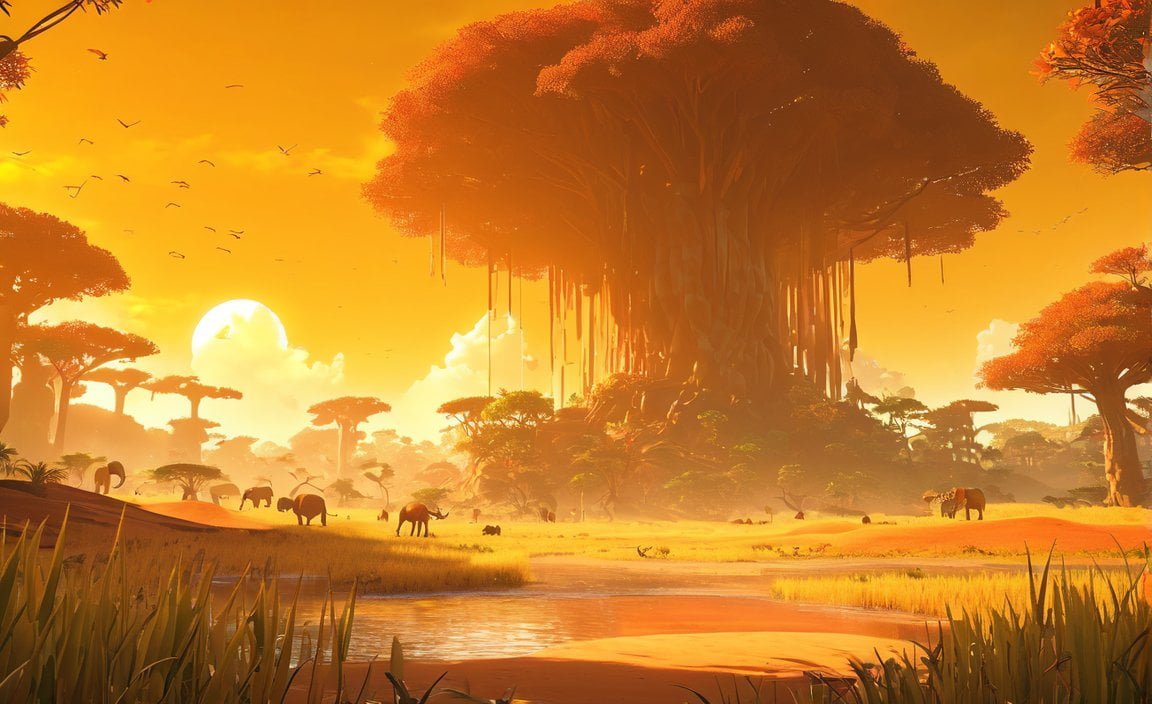
FAQ
Q1: Where can savannas be found?
A1: Savannas can be found all over the world, including Africa, Australia, South America, and India.
Q2: Which continent has the largest expanses of savanna?
A2: Africa has the largest expanses of savanna.
Q3: What are the main characteristics of savanna biomes?
A3: Savannas have an open canopy, distinct wet and dry seasons, and a diverse range of animal life and plant adaptations.
Q4: How does the availability of food change in savannas?
A4: The availability of food in savannas changes due to the wet and dry seasons.
Q5: What impact do humans have on the savanna biome?
A5: Humans have both positive and negative impacts on the savanna biome. Positive impacts include sustainable farming methods practiced by indigenous tribes, while negative impacts include land-cover change, overgrazing, and greenhouse gas emissions.
- Sept 31 Myth: Unveiling Calendar Secrets - March 18, 2025
- How Long & Till December 18, 2025: Accurate Countdown Guide - March 18, 2025
- Discover Japanese Artists: A Complete History - March 18, 2025
